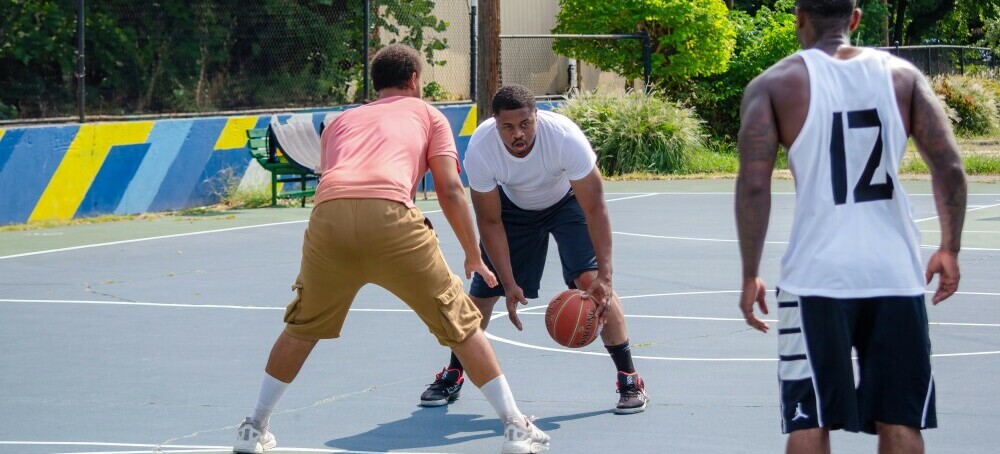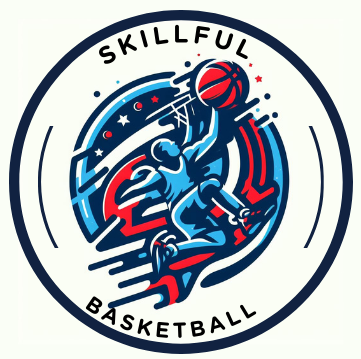 Defensive stance forms the bedrock of any solid defense strategy. Just like the way a good foundation holds up a building, a strong stance ensures that you stay balanced and ready to react. If you want to get ahead in anything from basketball to martial arts, nailing this down is non-negotiable.
Defensive stance forms the bedrock of any solid defense strategy. Just like the way a good foundation holds up a building, a strong stance ensures that you stay balanced and ready to react. If you want to get ahead in anything from basketball to martial arts, nailing this down is non-negotiable.
Let’s break it down.
First, the feet. They should be slightly wider than shoulder-width apart. Imagine you’re about to sit down on an invisible chair – that’s the level of bend in your knees you’re aiming for. This crouched position keeps your center of gravity low, making it harder for your opponent to knock you off balance.
The hands are just as important. They should be up and active, ready to intercept or block. Think of them as your first line of defense. Keeping them out wide can help you control more space and make it difficult for your opponent to get past you.
Your weight should be distributed evenly on the balls of your feet, not your heels. This ensures you can move quickly in any direction. Remember, the more agile you are, the better your defense will be. A good tip here is to stay light on your feet – almost like you’re ready to spring into action at any moment.
Finally, your head and eyes. Keep your head up and your eyes focused on the opponent’s chest and hips rather than their eyes or the ball. This way, you get a better read of where they’re trying to go. The chest and hips give away direction more reliably than anything else.
Getting comfortable with this stance takes practice. Spend time drilling it until it becomes second nature. You want to be able to drop into this position without even thinking about it. Once the basics are second nature, you’ll find that every other part of your defensive game gets a whole lot easier.
Teaching Defensive Stance: Steps and Techniques
Breaking down the defensive stance into manageable steps makes it easier for anyone to learn and perfect. Here’s a practical guide on how to teach those essential elements effectively.
Start with positioning the feet. Ensure that your students understand that their feet should be slightly wider than shoulder-width apart. This stance provides a solid base for balance and mobility. Assist them to find their balance here before moving on.
Next, the knees. Demonstrate how to bend the knees as if about to sit in an invisible chair, lowering the center of gravity. This step is crucial for maintaining stability and readiness. Practice this bend repeatedly to make it feel natural.
Then, address hand placement. Encourage keeping hands up and active, mimicking the motion of blocking or intercepting. A good drill here is to practice hand movements while maintaining the stance to develop muscle memory.
Body weight distribution is the next focus. Show students how to distribute their weight on the balls of their feet, ensuring they avoid leaning back on their heels. This maximizes their agility and quickness. Use balance exercises to reinforce this concept.
Lastly, emphasize the importance of keeping the head up and eyes focused on the opponent’s chest and hips. Train students to resist the urge to watch the opponent’s eyes or the ball, as the chest and hips are more reliable indicators of movement.
Common mistakes include standing too upright, weight leaning too far back, or keeping hands too low. Point these out and correct them through repetition and feedback. Use video recordings for visual feedback to help learners self-correct and understand their posture better.
In addition to the above steps, introducing specific drills can help solidify these skills. For instance, mirror drills where one player tries to mimic the other’s movements, or shadowing exercises that focus on maintaining the stance while moving, are highly effective.
Mastering Defensive Footwork: Movement and Agility
Defensive footwork is where the magic happens. Being quick on your feet means you can react faster, cover more ground, and ultimately, shut down your opponent more effectively.
Defensive footwork is where the magic happens. Being quick on your feet means you can react faster, cover more ground, and ultimately, shut down your opponent more effectively.
Here’s a breakdown of the key steps to mastering defensive footwork:
- Stay Light on Your Feet: Practice the basic shuffles — moving left, right, forward, and backward — while maintaining your stance. Start slow and build up speed. Keep your feet from completely leaving the ground to maintain balance and control.
- Master the Drop Step: When an opponent beats you to one side, the drop step helps you recover. Pivot on the foot furthest from your opponent, and use the other foot to push off and reposition. This maneuver keeps you facing your opponent, maintaining defensive pressure.
- Perfect the Crossover Step: If your opponent changes direction, the crossover step allows you to quickly realign yourself. Cross one foot over the other while shifting your weight, ensuring you stay squared to your opponent.
- Incorporate Agility Drills: Add ladder drills and cone drills to your training routine. These exercises improve foot speed and coordination, helping you mimic the unpredictable movements you’ll face during actual gameplay. Focus on being precise and quick with each step.
- Practice Footwork Shadowboxing: Shadowboxing for footwork is a great solo drill. Mimic the movements of an imagined opponent, visualizing different scenarios, and practice the appropriate footwork responses. This drill helps in developing instincts and quick reaction times.
- Consistency is Key: Regularly incorporating these drills into your routine is essential. With consistent practice, fluid movement will become second nature, leading to increased agility and defensive effectiveness over time.
Next, let’s talk about the integration of our defensive stance, with our footwork as we want them both to work in parallel .
Integrating Defensive Stance and Footwork
Once you’ve got a solid grip on both your defensive stance and footwork, it’s time to put them together. Combining these two elements brings your defensive game to life, ensuring you can react and adapt no matter the situation.
Start with drills that focus on maintaining your stance while moving. Practice shuffling side-to-side, forward, and backward in your defensive stance. This combo helps create a fluid transition between movement and stability.
Incorporate reaction drills. For example, have a partner or coach signal a direction for you to move. Your goal is to react quickly while keeping your stance intact. This not only enhances your footwork but also trains your brain to stay disciplined under pressure.
Introduce situational drills that replicate real-game scenarios. Whether it’s in basketball, soccer, or martial arts, putting your skills to the test in a controlled setting builds confidence and adaptability. For basketball, focus on defending against a dribbler, practicing both your stance and footwork in tandem. In soccer, work on shadowing and tackling, paying attention to your foot positioning and body alignment. In martial arts, drills that involve defending against attacks while maintaining stance and footwork are invaluable.
Visual aids can be a game-changer. Watching video demonstrations of professionals executing these skills properly provides a clear image of what you’re aiming to achieve. Break down videos into segments to focus on specific movements, mimicking what you see.
Remember, repetition is your best friend. The more you practice integrating stance and footwork, the more natural it becomes. Regular drills will train your muscles and mind to maintain defensive integrity no matter the challenge.
Developing a Defensive Mindset and Strategy
A strong stance and footwork are essential, but a sharp mind is what turns good defense into great defense. Developing a defensive mindset means being mentally prepared to anticipate, react, and adapt at a moment’s notice.
- Start by understanding your opponent. Study their tendencies, strengths, and weaknesses. This knowledge allows you to anticipate their moves and be in the right place at the right time. Watching game footage and paying attention to patterns in their play can provide invaluable insights.
- Communication is key in team sports. Always stay vocal on the field or court. Calling out screens, alerting teammates to cuts, and constantly being a talkative presence ensures everyone is on the same page. This not only bolsters your game but also strengthens overall team defense.
- Patience can’t be overstated. Knowing when to make a move and when to hold your ground is crucial. Jumping in too early or hesitating for too long gives opponents the edge. Remain calm and collected, ready to react appropriately.
- Mistakes happen. What matters is how quickly you can recover from them. Maintain a positive attitude and focus on the next play rather than dwelling on errors. Short-term memory is a valuable asset in any defensive strategy.
Continuous feedback is essential for improving your defensive play. Seek constructive criticism from coaches and teammates. Watch your own game footage to identify areas of improvement and celebrate successful defenses. Learning from both successes and failures fuels growth.
Finally, always seek to innovate and adapt your defensive strategies. The game is ever-evolving, and so should your approach. Staying current with new techniques and strategies keeps you ahead of the curve.
